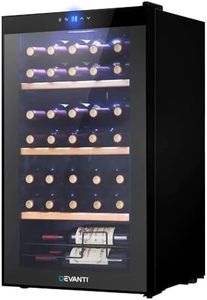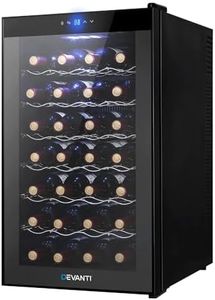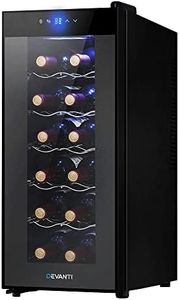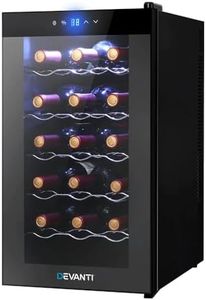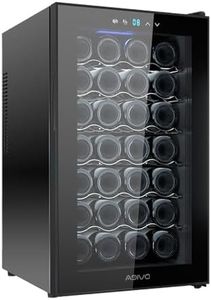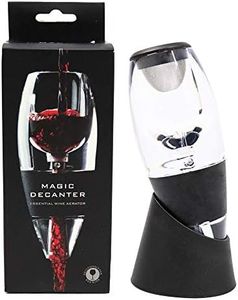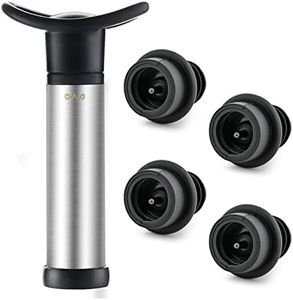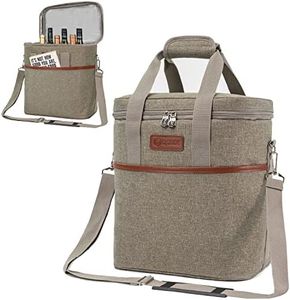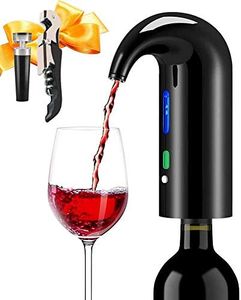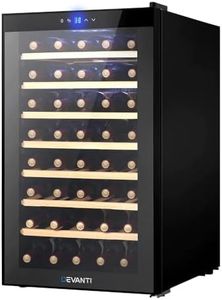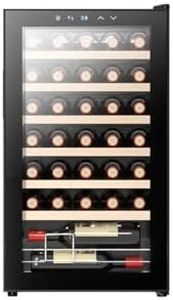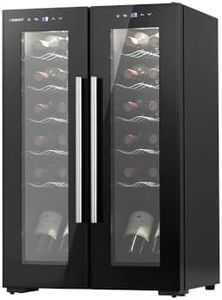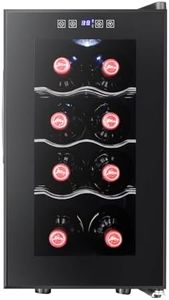We Use CookiesWe use cookies to enhance the security, performance,
functionality and for analytical and promotional activities. By continuing to browse this site you
are agreeing to our privacy policy
10 Best Wine Refrigerators
From leading brands and best sellers available on the web.Buying Guide for the Best Wine Refrigerators
Choosing a wine refrigerator is all about creating the best environment to keep your wine at the ideal temperature and humidity, ensuring every bottle you open tastes its best. Start by thinking about how much wine you want to store, the types of wine you usually drink, and where you'll put the refrigerator. Keep in mind that different features suit different lifestyles, whether you're an occasional sipper or an enthusiastic collector. Understanding the key specs will help you make a choice that fits your needs, protects your wine investment, and fits nicely into your home.CapacityCapacity refers to how many standard wine bottles the refrigerator can hold. It's important because it determines how much wine you can store at once. Wine fridges come in a range of capacities, usually holding anywhere from just a dozen bottles to over a hundred. Small units (less than 20 bottles) are great for people with limited space or those who keep only a few bottles on hand. Medium units (20-50 bottles) suit casual drinkers with growing collections, while large units (over 50 bottles) are best for collectors or entertainers. Think about your drinking habits and whether your collection is likely to grow, so you choose a size that fits your lifestyle without taking up unnecessary space.
Temperature ZonesTemperature zones mean the fridge can maintain one or more separate temperature areas. This is important because different wines (reds, whites, sparkling) have ideal serving or storage temperatures. Single-zone coolers are set to one temperature throughout, making them a good choice if you mainly drink one type of wine. Dual-zone (or more) models let you keep reds and whites at different temperatures, which is great for mixed collections or entertaining guests with a variety of tastes. Decide based on whether you need to store just one type or need the flexibility for more.
Cooling Type (Compressor vs. Thermoelectric)Wine coolers use either compressor or thermoelectric technology to keep your bottles chilled. Compressor models work like regular fridges, cooling more powerfully and handling higher temperatures, so they're better for larger fridges or hot rooms. Thermoelectric models are quieter and vibration-free, making them perfect for small spaces and delicate wines, but they work best in cooler environments and tend not to be as powerful. Consider where the fridge will be placed—if your room is temperature-controlled, thermoelectric might be sufficient; if it's warmer or you're going bigger, compressor is more reliable.
Humidity ControlGood humidity helps keep corks moist and prevents wine from spoiling. Some wine fridges have built-in humidity control, either through special settings or extra features like water trays. Basic models may not control humidity much, which is OK for short-term storage or if your home isn't too dry, but long-term collectors should look for a fridge with specific humidity features. Match your choice to how seriously you take long-term wine preservation—if aging bottles for years, humidity becomes more important.
Shelving DesignShelving design is about the shape, size, and adjustability of the shelves inside the fridge. Shelves that are adjustable or slide out make it easier to access bottles and fit different bottle shapes (like Champagne or Burgundy). Fixed, close-set shelves can save space but may not fit all bottle types. If you prefer a wider variety of wines or want convenient access, look for flexible, sliding shelves; if you're mostly storing standard bottles, fixed shelving will work fine.
Noise LevelNoise level is how much sound the fridge makes as it works. This matters if you'll keep your fridge in a living space or home office. Compressor types usually hum, while thermoelectric coolers are nearly silent. If quiet is crucial, look for reported decibel ratings or choose a thermoelectric model; for basements or garages, noise is less of an issue.
UV ProtectionUV protection keeps sunlight from harming your wine through the fridge's glass door. This can be a tinted or double-paned glass filter that blocks UV rays. If your fridge will be in a bright room or near windows, UV protection helps prevent wine from spoiling or aging poorly. For fridges in dark spaces, this feature is less critical.
Installation Type (Freestanding vs. Built-in)Installation type tells you if the fridge is made to stand alone or be tucked under a counter. Freestanding fridges can go almost anywhere but need space around them to keep cool. Built-in (or undercounter) fridges fit into your cabinetry and have front-facing vents. Your kitchen layout, available space, and style preference will determine which is best—pick built-in for a seamless look or freestanding for flexibility.

